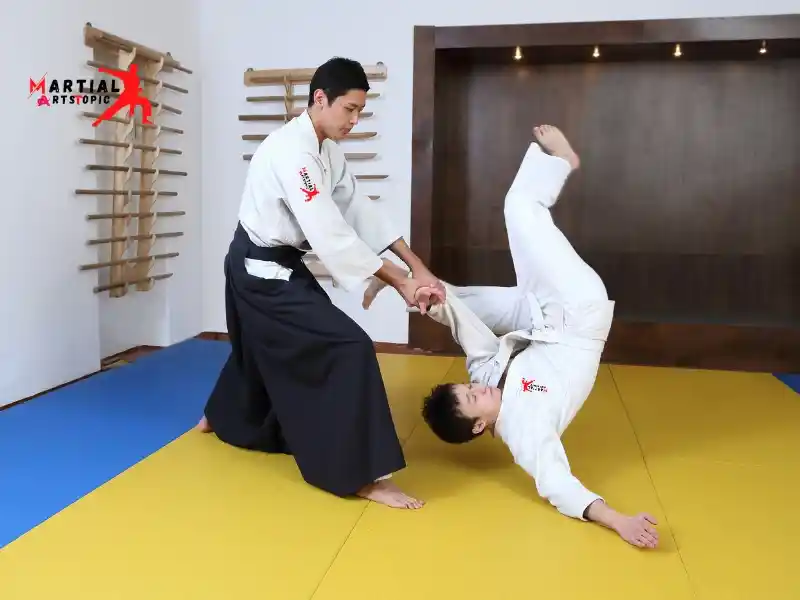
Understanding Aikido
Understanding Aikido: History, Principles, and Benefits for Beginners aikido is a martial art that has gained popularity worldwide for its unique approach to self-defense and personal development. In this article, we will delve into the history and origins of Aikido, explore its key principles and philosophy, and discuss the benefits of practicing Aikido for beginners.
History and Origins of Aikido
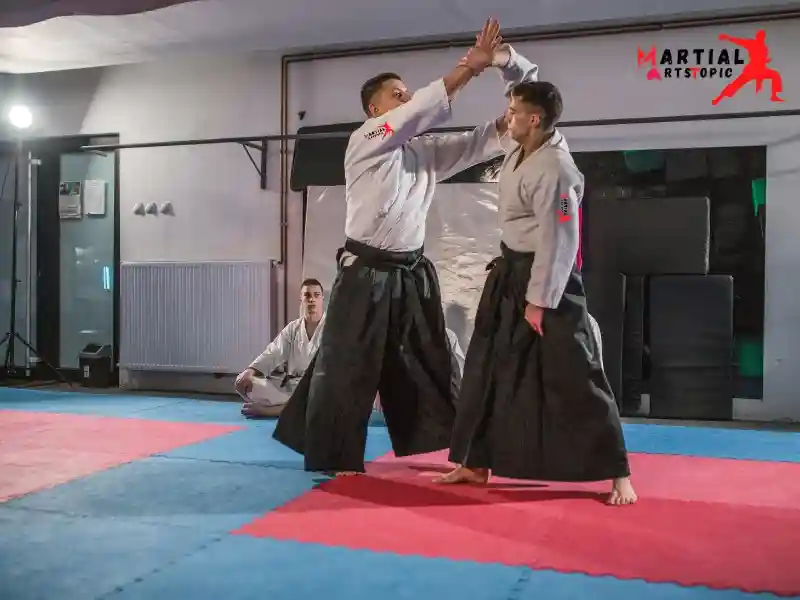
Morihei Ueshiba developed aikido in the early 20th century, often referred to as O Sensei, in Japan. Drawing inspiration from his training in traditional Japanese martial arts, as well as his spiritual and philosophical beliefs, O Sensei sought to create a martial art that focused on harmony and non-violent resolution of conflict.
O Sensei’s encounters influenced the techniques and principles of Aikido with other martial artists, as well as his deep study of Japanese martial traditions and religious practices. The result was a martial art that emphasized blending with an opponent’s energy and redirecting their force, rather than meeting aggression with aggression.
Key Principles and Philosophy of Aikido
Several key principles and a unique philosophy that sets it apart from other martial arts guide aikido. Central to Aikido is the concept of “ai-ki,” which can be translated as “the way of harmony with ki (energy).” Practitioners of Aikido aim to harmonize with the energy of an attack and neutralize it through fluid and circular movements.
Another fundamental principle of Aikido is the emphasis on non-resistance and non-competition. Rather than seeking to defeat an opponent through force, Aikido practitioners seek to resolve conflict without causing harm, using the attacker’s energy to create a safe and peaceful outcome.
The philosophical underpinnings of Aikido are deeply rooted in the idea of creating a peaceful and harmonious world through personal transformation and the cultivation of a compassionate and empathetic mindset. Aikido teaches practitioners to develop a mindset of calmness, awareness, and empathy, both on and off the mats.
Benefits of Practicing Aikido for Beginners
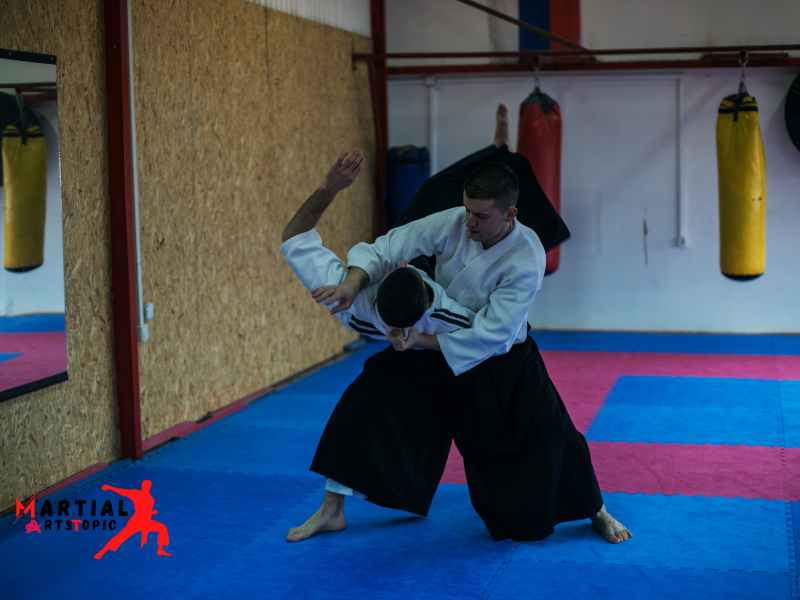
For beginners looking to start their journey in Aikido, there are numerous benefits to be gained from practicing this martial art. Aikido offers a holistic approach to physical fitness, mental wellbeing, and self-defense skills, making it an ideal choice for individuals of all ages and fitness levels.
Physical Benefits: Aikido training involves a combination of stretching, aerobic exercise, and strength-building movements, leading to improved flexibility, cardiovascular health, and overall physical conditioning. The techniques practiced in Aikido also promote balance, coordination, and body awareness.
Mental and Emotional Benefits: Aikido training provides a unique opportunity for practitioners to develop mental resilience, focus, and self-discipline. Through the practice of Aikido, beginners can learn to remain calm and centered in the face of adversity, as well as cultivate a sense of inner peace and harmony.
Self-Defense Skills: Aikido techniques are designed to neutralize aggression and protect oneself without causing unnecessary harm to the attacker. Beginners can learn effective self-defense skills while also gaining the confidence to handle challenging situations with composure and control.
Beginning Aikido: Getting Started
Beginning Aikido: Getting Started with Beginning Aikido, Everything You Need to Know to Start Your Aikido Journey. If you’re interested in beginning Aikido, you’re taking the first step towards a fulfilling and enriching martial arts practice. Aikido is a Japanese martial art that focuses on self-defense techniques and the development of physical and mental discipline. Whether you’re a complete beginner or have some experience in other martial arts, starting Aikido can be an exciting and rewarding endeavor. In this guide, we’ll cover everything you need to know to get started with Aikido, including finding a reputable Aikido dojo, understanding the etiquette and customs of Aikido practice, and choosing the right clothing and equipment for Aikido training.
Finding a reputable Aikido dojo
One of the most important steps in beginning Aikido is finding a reputable Aikido dojo. A dojo is a place where Aikido is practiced and taught, and choosing the right one can have a significant impact on your Aikido journey. When looking for an Aikido dojo, consider the following:
- Reputation and lineage: Look for a dojo with a good reputation and a strong lineage of Aikido training. A reputable dojo is usually affiliated with a recognized Aikido organization and has experienced instructors with a proven track record.
- Instructor credentials: Inquire about the instructors’ credentials, experience, and teaching style. It’s essential to train under qualified and knowledgeable instructors who can guide you in your Aikido practice.
- Training environment: Visit the dojo and observe a class to get a sense of the training environment. A welcoming and supportive atmosphere, as well as a focus on safety and respect, are crucial factors to consider when choosing a dojo.
By finding a reputable Aikido dojo, you can ensure that you receive quality instruction and guidance as you begin your Aikido journey.
Understanding the etiquette and customs of Aikido practice
Aikido has a rich tradition of etiquette and customs that are integral to the practice. Understanding and respecting these traditions is essential for anyone beginning Aikido. Here are some key etiquette and customs to keep in mind:
- Bowing: Bowing is a fundamental aspect of Aikido etiquette and is used to show respect to the instructors, fellow practitioners, and the art itself. Learning the proper way to bow is an important part of Aikido practice.
- Protocol on the mat: When stepping onto the training mat (tatami), it’s important to follow the established protocol, such as sitting properly, waiting for instructions, and maintaining a respectful attitude towards the training space.
- Respect for others: Aikido emphasizes mutual respect and cooperation. Practitioners are expected to treat each other with respect, humility, and consideration, creating a positive and harmonious training environment.
By familiarizing yourself with the etiquette and customs of Aikido practice, you can show proper respect for the art and its practitioners as you embark on your Aikido journey.
Choosing the right clothing and equipment for Aikido training
As you start Aikido, choosing the right clothing and equipment is essential for your comfort, safety, and effectiveness in training. Here’s what you need to consider:
- Gi (training uniform): Aikido practitioners wear a traditional uniform called a gi, consisting of a jacket (uwagi) and pants (zubon). The gi should be durable, comfortable, and allow for unrestricted movement during practice.
- Obi (belt): The color of the belt signifies the practitioner’s rank and experience level. Beginners typically start with a white belt and progress through various colors as they advance in their training.
- Other equipment: Depending on the dojo’s requirements, you may need additional equipment such as a bokken (wooden sword), jo (staff), or tanto (knife) for weapons training, as well as protective gear for advanced practice.
By choosing the right clothing and equipment for Aikido training, you can ensure that you’re well-prepared and equipped for your journey into the world of Aikido.
Basic Techniques
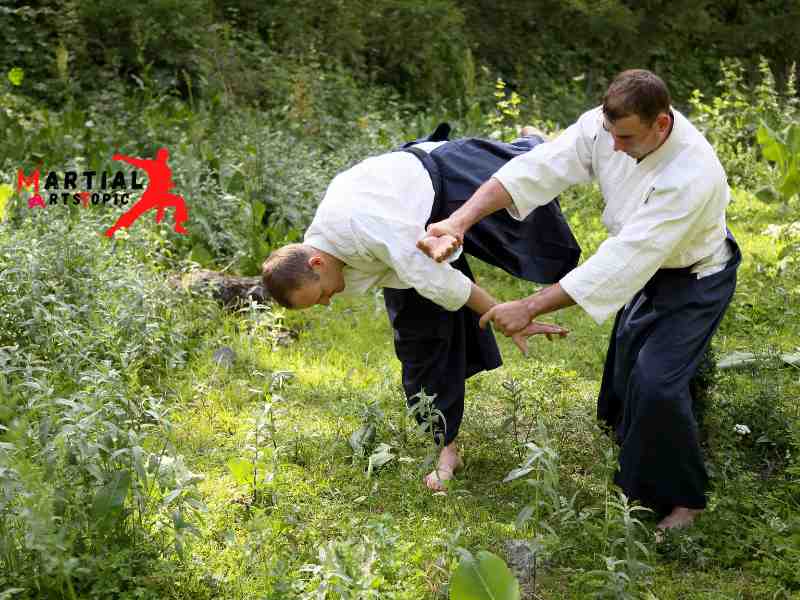
The Basics of Aikido: A Beginner’s Guide to Fundamental Techniques, are you ready to embark on a journey of self-discovery and physical mastery? Aikido, a Japanese martial art known for its fluid and graceful movements, offers a holistic approach to self-defense and personal development. In this guide, we will delve into the basic techniques of Aikido, providing an overview of fundamental movements and stances, a step-by-step breakdown of basic Aikido techniques, and the importance of proper body posture and alignment. Whether you are a complete novice or have some experience in martial arts, mastering the basics of Aikido is essential for building a strong foundation for your practice.
Overview of fundamental Aikido movements and stances
The essence of Aikido lies in its emphasis on harmony and non-resistance. Practitioners learn to blend with the energy of an attack and redirect it, rather than meeting force with force. Fundamental movements and stances form the building blocks of Aikido practice, providing a solid foundation for more advanced techniques. These include:
- Tai no henko: A basic exercise involving blending and pivoting movements that are essential for developing a strong connection with the opponent.
- Kokyu ho: Breathing exercises that help practitioners cultivate relaxation and centeredness, key components of Aikido practice.
- Hanmi: A fundamental stance in Aikido, emphasizing a balanced and stable posture that allows for fluid movement and effective defense.
Step-by-step breakdown of basic Aikido techniques
For beginners, learning the basic techniques of Aikido is a gradual and rewarding process. Each technique is designed to teach fundamental principles of movement, timing, and control. Here’s a step-by-step breakdown of some basic Aikido techniques:
- Ikkyo: The first technique taught in many Aikido dojos, ikkyo involves controlling the opponent’s arm and leading them into a pin or a throw.
- Nikyo: A joint lock that focuses on applying pressure to the wrist, causing the opponent to yield and creating an opportunity for redirection.
- Sankyo: A twisting joint lock that capitalizes on the opponent’s energy, guiding it into a controlled and balanced position.
Importance of proper body posture and alignment
In Aikido, proper body posture and alignment are crucial for maintaining stability, generating power, and preventing injury. Practitioners are encouraged to develop a strong and flexible body, with a focus on the following:
- Taisabaki: The art of body movement in Aikido, involving pivoting, shifting, and blending with the opponent’s energy.
- Hara: The center of gravity and source of power in Aikido, located in the lower abdomen, where practitioners learn to move from and generate strength.
- Maai: The concept of distancing and timing, where practitioners learn to maintain the optimal distance from the opponent to execute techniques effectively.
Developing Skills
The Art of Beginning Aikido: A Journey of Developing Skills are you ready to embark on a transformative journey of beginning Aikido? Whether you are new to martial arts or seeking to expand your skill set, Aikido offers a rich and rewarding experience that goes beyond physical techniques. From progressing from basic techniques to more advanced movements, understanding the concept of blending and redirecting energy, to practicing mindfulness and focus during training, Aikido provides a holistic approach to personal development and self-improvement.
Progressing from Basic Techniques to More Advanced Movements
As a beginner in Aikido, mastering the fundamental techniques is crucial to building a strong foundation. From learning basic stances and movements to understanding the principles of balance and alignment, beginners are guided through a systematic progression that allows them to develop their skills at a comfortable pace. With dedicated practice and guidance from experienced instructors, students gradually advance to more complex and dynamic movements, honing their abilities and expanding their repertoire of techniques.
Understanding the Concept of Blending and Redirecting Energy in Aikido
At the heart of Aikido lies the concept of blending and redirecting energy, which distinguishes it from other martial arts practices. Through continuous training, beginners learn to harmonize with the energy of their opponents, utilizing circular movements and precise timing to neutralize and redirect attacks. This principle not only enhances one’s self-defense capabilities but also fosters a deeper understanding of conflict resolution and non-violent communication. As beginners delve into the intricacies of Aikido, they uncover the transformative power of redirecting and transforming adversarial forces into harmonious outcomes.
Practicing Mindfulness and Focus During Aikido Training
Aikido transcends physical movements, emphasizing the cultivation of mindfulness and focus as integral components of training. Beginners are encouraged to develop a heightened awareness of their body, breath, and surroundings, promoting a state of mental presence and clarity. By integrating mindfulness practices into their Aikido training, beginners not only enhance their physical coordination and reaction times but also nurture a sense of inner calm and resilience. Through dedicated practice, students harness the power of mindfulness to navigate challenges on and off the mat, fostering a balanced and centered approach to life.
Training and Practice

Training and Practice in Beginning Aikido: Setting Realistic Goals, Establishing Consistent Schedule, and Incorporating Solo and Partner Drills for Skill Development if you are just starting your Aikido journey, congratulations! Aikido is a beautiful and dynamic martial art that offers numerous physical and mental benefits. However, like any martial art, mastering Aikido requires dedication, consistent training, and setting realistic goals. In this blog, we will explore how to set realistic training goals, create a consistent training schedule, and incorporate solo and partner drills for skill development in beginning Aikido practice.
Setting Realistic Training Goals for Aikido Practice
Setting realistic training goals is crucial for progress and motivation in Aikido. Whether you aim to improve your technique, increase your flexibility, or advance through belt ranks, having clear and achievable goals will guide your training and keep you focused. As a beginner, it’s important to start with small, achievable goals and gradually build upon them as you progress.
Creating a Consistent Training Schedule
Consistency is key to Aikido training. To make progress and see improvement, it’s essential to establish a consistent training schedule. Whether you choose to train once a week or multiple times a week, sticking to a regular routine will help you build muscle memory, improve stamina, and deepen your understanding of Aikido techniques.
Incorporating Solo and Partner Drills for Skill Development
Aikido encompasses a wide range of techniques that involve both solo and partner practice. Incorporating solo drills, such as weapons practice or body movement exercises, can help you develop balance, coordination, and fluidity in your movements. Additionally, partnering up for drills allows you to practice techniques in a dynamic and responsive environment, honing your timing, distance, and sensitivity to your partner’s energy.
Weapons Training
Are you ready to embark on a journey to primary Aikido weapons training? Aikido, a Japanese martial art known for its graceful and effective techniques, offers a unique approach to weapons training through the use of the bokken and jo. In this comprehensive guide, we will delve into the world of Aikido weapons training, covering the introduction to Aikido weapons and basic weapon handling and exercises.
Introduction to Aikido weapons such as the bokken and jo
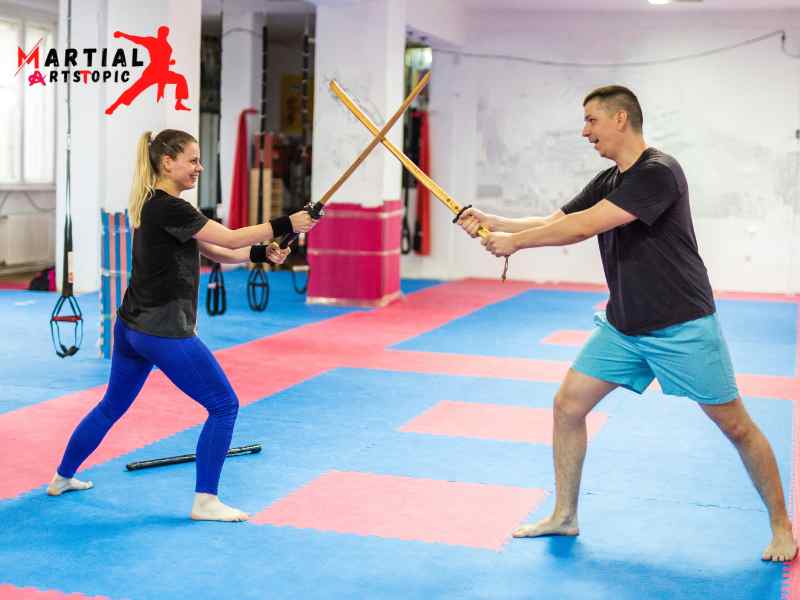
Aikido, often referred to as the “way of harmonious spirit,” incorporates various weapons into its training regimen, with the bokken (wooden sword) and jo (staff) being two of the most commonly used. These weapons are not only extensions of the practitioner’s body but also tools for understanding the principles of Aikido in a deeper and more profound way.
The bokken, crafted from wood and designed to resemble a katana (traditional Japanese sword), is an essential tool in Aikido weapons training. It teaches practitioners the art of wielding a sword with precision and grace, honing their timing and distancing skills. The jo, a wooden staff approximately four feet in length, enhances the understanding of leverage and body movement, making it an integral part of Aikido practice.
Basic Weapon Handling and Exercises for Aikido Weapons Training
Engaging in Aikido weapons training requires a solid foundation in basic weapon handling and exercises. Whether you are a beginner or an experienced practitioner, mastering the fundamental techniques is crucial for advancing in Aikido. Here are some key aspects of basic weapon handling and exercises for Aikido weapons training:
- Grip and Posture: Learn the proper way to hold the bokken and jo, maintaining a relaxed yet firm grip while maintaining a balanced posture.
- Suburi (Solo Sword Exercises): Practice basic cutting and striking movements with the bokken to develop coordination and fluidity in your techniques.
- Jo Kata (Staff Forms): Explore fundamental jo movements and sequences to familiarize yourself with the staff’s unique capabilities and applications in Aikido.
- Partner Exercises: Work with a training partner to practice basic weapon-to-weapon interactions, focusing on timing, distance, and mutual awareness.
Mind and Body Connection
Embarking on the journey of learning Aikido is not merely about mastering physical techniques; it is also about delving into the mental and spiritual aspects that contribute to the holistic development of the practitioner. In this article, we will explore the profound connection between the mind and body in beginning Aikido practice, shedding light on the incorporation of breathing exercises, meditation, and the fundamental principles of harmony and non-violence.
The Mental and Spiritual Aspects of Aikido
Aikido, often referred to as the “way of harmony,” goes beyond physical combat and self-defense. It encompasses a philosophy that emphasizes the cultivation of a peaceful mind and the promotion of harmony within oneself and with others. As beginners embark on their Aikido journey, they are encouraged to explore the mental and spiritual dimensions of the martial art, seeking not only to develop physical skills but also to attain inner balance and serenity.
Incorporating Breathing Exercises and Meditation into Aikido Practice
Breathing exercises and meditation are integral components of Aikido practice, serving as powerful tools for centering the mind and connecting with the body. By incorporating controlled breathing techniques and mindfulness practices, beginners in Aikido can enhance their awareness, concentration, and ability to remain calm in the face of challenges. These practices not only contribute to the refinement of physical movements but also foster a deep sense of inner tranquility and focus.
Understanding the Principles of Harmony and Non-Violence in Aikido
At the heart of Aikido lies the principles of harmony and non-violence, which guide practitioners in their interactions both on and off the mat. Beginners are introduced to the concept of blending with an opponent’s energy rather than opposing it, learning to redirect aggression and conflict into harmonious and non-destructive outcomes. Through the practice of Aikido techniques, beginners cultivate an attitude of peaceful resolution and develop a profound understanding of the interconnectedness of mind, body, and spirit.
Safety and Injury Prevention
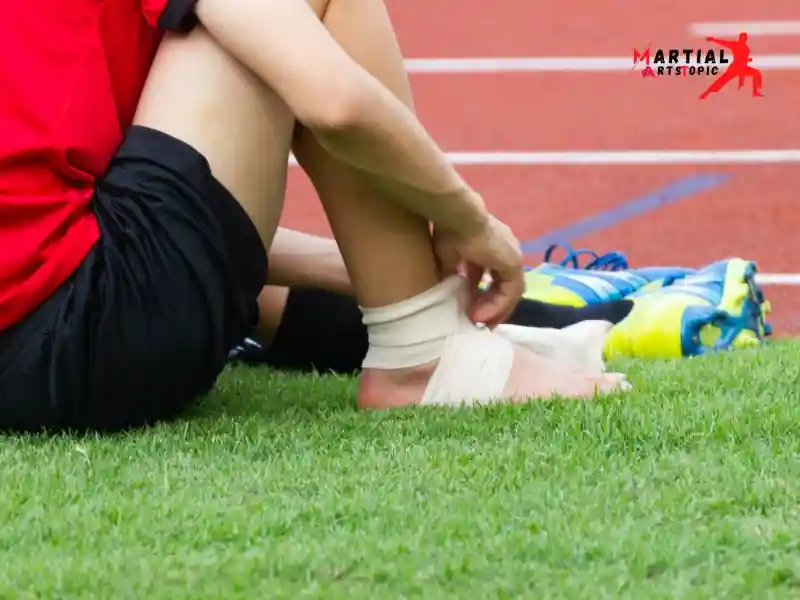
When beginning Aikido, safety and injury prevention should be top priorities. Aikido is a martial art that focuses on harmony and non-resistance, but it still involves physical activity and contact, which can lead to injuries if proper precautions are not taken. In this blog, we will discuss the importance of warm-up and stretching routines before Aikido practice, recognizing and addressing common Aikido-related injuries, and promoting a safe and supportive training environment.
Importance of warm-up and stretching routines before Aikido practice
Before engaging in any physical activity, including Aikido, it is crucial to prepare the body for the movements and potential stresses it will endure. Warm-up exercises help increase blood flow to the muscles, loosen the joints, and raise body temperature, all of which can help reduce the risk of injury during Aikido practice. Incorporating dynamic movements such as light jogging, arm circles, and leg swings can prepare the body for the specific movements and techniques used in Aikido. Additionally, stretching routines can improve flexibility, which is essential for executing Aikido techniques effectively and safely.
Recognizing and addressing common Aikido-related injuries
Despite the emphasis on harmony and non-resistance, Aikido practitioners can still experience injuries, especially if proper techniques and safety precautions are not followed. Common Aikido-related injuries include sprains, strains, and joint injuries, often resulting from improper falling or overexertion during training. It is important for beginners to recognize the signs of these injuries and seek appropriate medical attention if necessary. Additionally, instructors should be trained to recognize and address these injuries promptly and effectively to ensure the safety and well-being of their students.
Promoting a safe and supportive training environment
Creating a safe and supportive training environment is essential for beginners and experienced Aikido practitioners alike. Instructors should prioritize safety by providing clear instructions, emphasizing proper techniques, and enforcing safety guidelines during training sessions. It is also important to foster a supportive and inclusive atmosphere where students feel comfortable asking questions, seeking assistance, and expressing concerns about safety. By promoting open communication and a respectful training environment, Aikido dojos can help prevent injuries and create a positive experience for all practitioners.
Aikido and Self-Defense
Aikido and Self-Defense: Exploring the Practical Applications of Beginning Aikido. Aikido is a Japanese martial art that has gained popularity for its practical applications in self-defense. This ancient discipline focuses on using an attacker’s energy and movements against them, making it an effective and non-aggressive form of self-defense. In this blog post, we will explore the practical applications of Aikido in self-defense, understand the non-aggressive nature of Aikido techniques, and how Aikido can enhance self-confidence and awareness.
Practical Applications of Aikido in Self-Defense
When it comes to self-defense, Aikido offers a unique approach that emphasizes using the attacker’s energy and movements to neutralize the threat. Aikido techniques are designed to redirect and control the force of an attack without causing harm to the attacker. This makes Aikido a practical and effective form of self-defense for individuals of all ages and physical abilities.
Understanding the Non-Aggressive Nature of Aikido Techniques
Unlike other martial arts that focus on striking or aggressive counterattacks, Aikido emphasizes blending with the attacker’s energy and redirecting it in a way that diffuses the situation. Aikido techniques are based on circular movements and leverage, allowing practitioners to control and subdue an attacker without resorting to aggression or violence. This non-aggressive approach makes Aikido an ideal choice for individuals who prefer a peaceful and harmonious resolution to conflicts.
How Aikido Can Enhance Self-Confidence and Awareness
Beyond its practical applications in self-defense, Aikido also offers numerous benefits for personal development. Through regular practice, Aikido can help individuals enhance their self-confidence, improve their physical coordination, and develop a heightened sense of awareness. By learning to remain calm and centered in the face of conflict, practitioners of Aikido can cultivate a strong sense of self-assurance and inner peace.
Aikido and Personal Growth
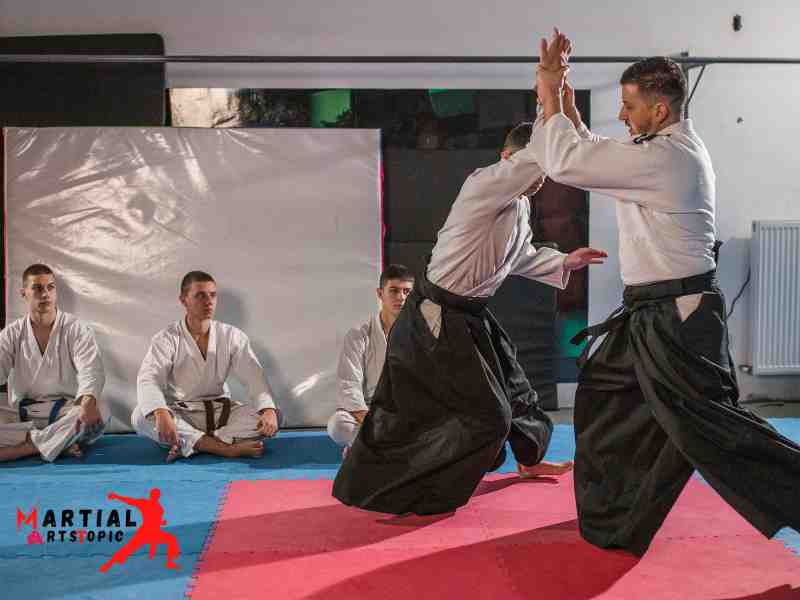
Aikido and Personal Growth: Exploring the Mental and Spiritual Benefits, Testimonials, and Tips for Holistic Living aikido, a martial art that focuses on using an opponent’s energy to gain control, offers a wealth of mental and spiritual benefits for its practitioners. In this blog post, we will delve into the transformative effects of Aikido on personal growth, share inspiring testimonials from Aikido practitioners, and provide practical tips for incorporating Aikido into a holistic lifestyle. Whether you are a beginning Aikido student or a seasoned practitioner, this article will offer valuable insights into the profound impact of Aikido on one’s overall well-being.
Mental and Spiritual Benefits of Aikido
Aikido is not just a physical practice; it is also a discipline that cultivates mental clarity, emotional resilience, and spiritual awareness. Through rigorous training, Aikido practitioners learn to remain calm and focused in the face of adversity, developing a heightened sense of self-awareness and mindfulness. The principles of Aikido emphasize harmony, non-violence, and the redirection of negative energy, which can lead to a profound shift in one’s mindset and outlook on life. By internalizing these principles, Aikido practitioners often experience enhanced mental resilience, improved stress management, and a greater capacity for empathy and compassion.
Testimonials and Success Stories from Aikido Practitioners
The impact of Aikido on personal growth is best illustrated through the testimonials and success stories of its practitioners. Many individuals have found Aikido to be a transformative practice that not only improves physical fitness but also fosters personal development. From regaining confidence and overcoming fear to developing a deeper connection with oneself and others, Aikido has been instrumental in empowering individuals to navigate life’s challenges with grace and resilience. These testimonials serve as powerful reminders of the profound impact that Aikido can have on one’s mental, emotional, and spiritual well-being.
Tips for Incorporating Aikido into a Holistic Lifestyle
For those looking to integrate Aikido into a holistic lifestyle, there are several practical tips to consider. Firstly, consistency is key. Regular practice not only hones physical skills but also reinforces the mental and spiritual benefits of Aikido. Additionally, incorporating Aikido principles into daily interactions can promote harmony and mindfulness in all aspects of life. Whether it’s practicing centeredness during stressful situations or cultivating a mindset of non-resistance and adaptability, Aikido principles can be applied beyond the dojo, enriching one’s overall well-being.
Conclusion
Aikido is a dynamic martial art that emphasizes self-defense techniques and blending with the energy of an opponent. By mastering Aikido, practitioners can develop physical coordination, mental focus, and the ability to diffuse conflict without resorting to aggression. The principles of harmony, circular motion, and non-resistance are central to Aikido’s philosophy, making it a valuable practice for personal growth and self-improvement. Whether for physical fitness, self-defense, or spiritual development, Aikido offers a holistic approach to martial arts that can benefit individuals in various aspects of their lives.
